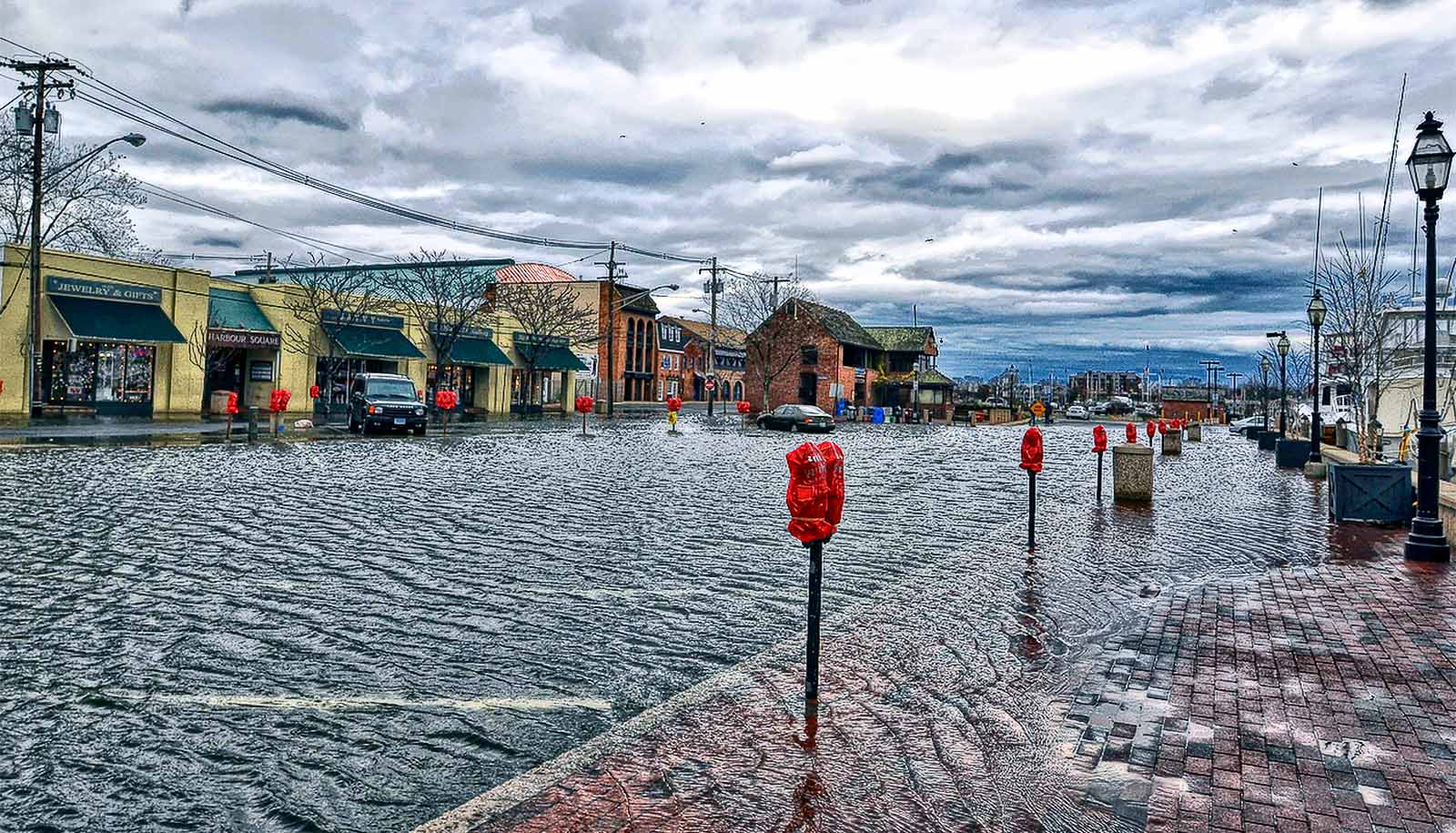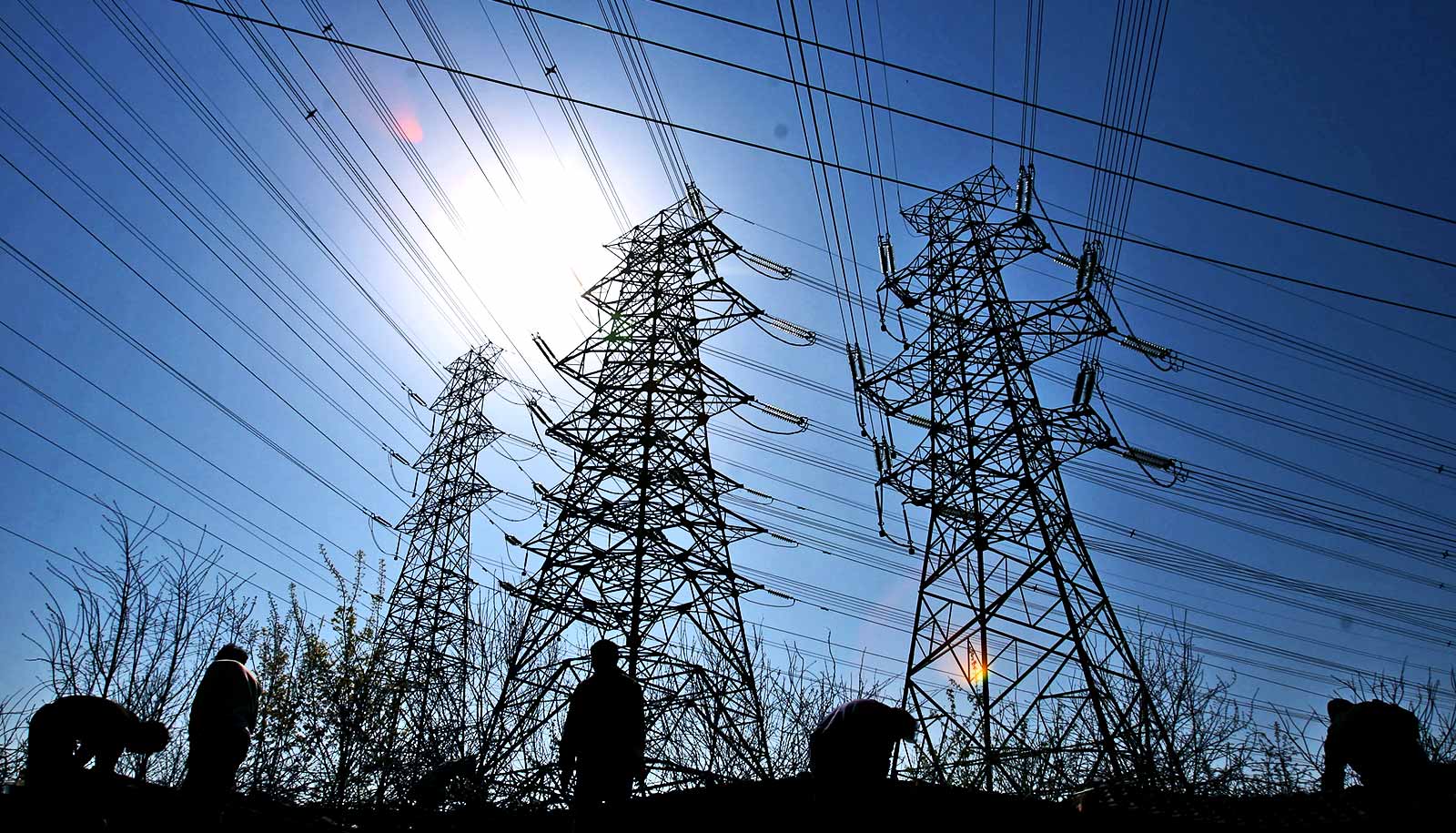Rising sea levels due to climate change are already costing businesses in the city of Annapolis, Maryland, according to new research.
Miyuki Hino, a graduate student at Stanford University, and her colleagues found that downtown Annapolis, Maryland’s state capital, suffered a loss of 3,000 visits in 2017 due to high-tide flooding, which equates to a loss of somewhere between $86,000 and $172,000 in revenue.
“Small businesses in downtown Annapolis rely on visitors. By measuring the extent of the impact of flooding, we can understand the business case—how sea level rise is already impacting businesses’ experiences and profits,” says Samanthe Belanger, a coauthor and Stanford MBA student at the time of the study, which appears in Science Advances.
More floods, fewer customers
High-tide flooding, sometimes called nuisance or sunny-day flooding, happens when ocean waters rise above the levels that coastal infrastructure was designed for. Water sweeps in, filling streets and parking lots and preventing normal pedestrian and vehicle traffic.
“…high-tide flooding is one way to experience [climate change] in your daily life just trying to get to your restaurant reservation.”
Once relatively rare, high-tide flooding days have increased about 60 percent from 20 years ago, according to the National Oceanic and Atmospheric Administration. In 27 locations across the US, the number of high-tide flooding days went from an average of 2.1 days per year in the late 1950s to 11.8 during 2006-10. By 2035, about 170 coastal communities are projected to experience 26 high-tide flooding days a year.
“As global temperatures and sea levels rise, high-tide flooding becomes more frequent,” says Hino, who is in the Emmett Interdisciplinary Program in Environment and Resources. “For coastal businesses, that means more days when customers might not be able to get to their store. Even though most floods only last for a few hours, their impacts can add up.”
Annapolis, home to the US Naval Academy, tops the list of cities experiencing increases in high-tide flooding. In the early 1960s, Annapolis had about four high-tide flooding days a year. In 2017, the small city on Chesapeake Bay experienced 63 high-tide flooding days.
“In Annapolis, as in many places, high-tide flooding is happening right in the heart of things. The historic district is a favorite among locals and tourists alike. It is now frequently flooding,” says Katharine Mach, a senior research scientist at Stanford’s School of Earth, Energy & Environmental Sciences and a coauthor of the study.
Visitors to City Dock
Researchers used parking meters, satellite imagery, interviews, and other data to determine how would-be customers were dissuaded from visiting during flood hours at a popular business region near the water known as City Dock. They found no evidence that customers were returning after the floods had subsided or parked somewhere nearby and braved the water to make it to businesses.
“So often we think of climate change and sea level rise as these huge ideas happening at a global scale, but high-tide flooding is one way to experience these changes in your daily life just trying to get to your restaurant reservation,” Hino says.
In 2017, the loss to City Dock businesses due to flooding was less than 2 percent of annual visitors, but the researchers warn that could get a lot worse as sea levels continue to rise. The study projects that if sea level increases by 3 more inches, visits to City Dock would be reduced by about 4 percent. With 12 inches of sea level rise, visits would be reduced by about 24 percent, a figure that could mean hundreds of thousands in lost revenue.
The US Global Change Research Program Climate Science Special Report has sea level rise projections relative to the year 2000 ranging between 0.5 and 1.2 feet by 2050.
“What we’re finding is something many local leaders in coastal cities already know: the waters are rising up and surging into daily life. So are the costs,” Mach says. “Understanding the impacts for people today—at large and small scale—is an essential starting point for making smart adjustments to the risks.”
Mach is director of the Stanford Environment Assessment Facility at the Stanford Woods Institute for the Environment and a senior research scientist in Earth system science.
Additional coauthors are from Stanford, the Precourt Institute for Energy, and the United States Naval Academy.
Source: Stanford University



